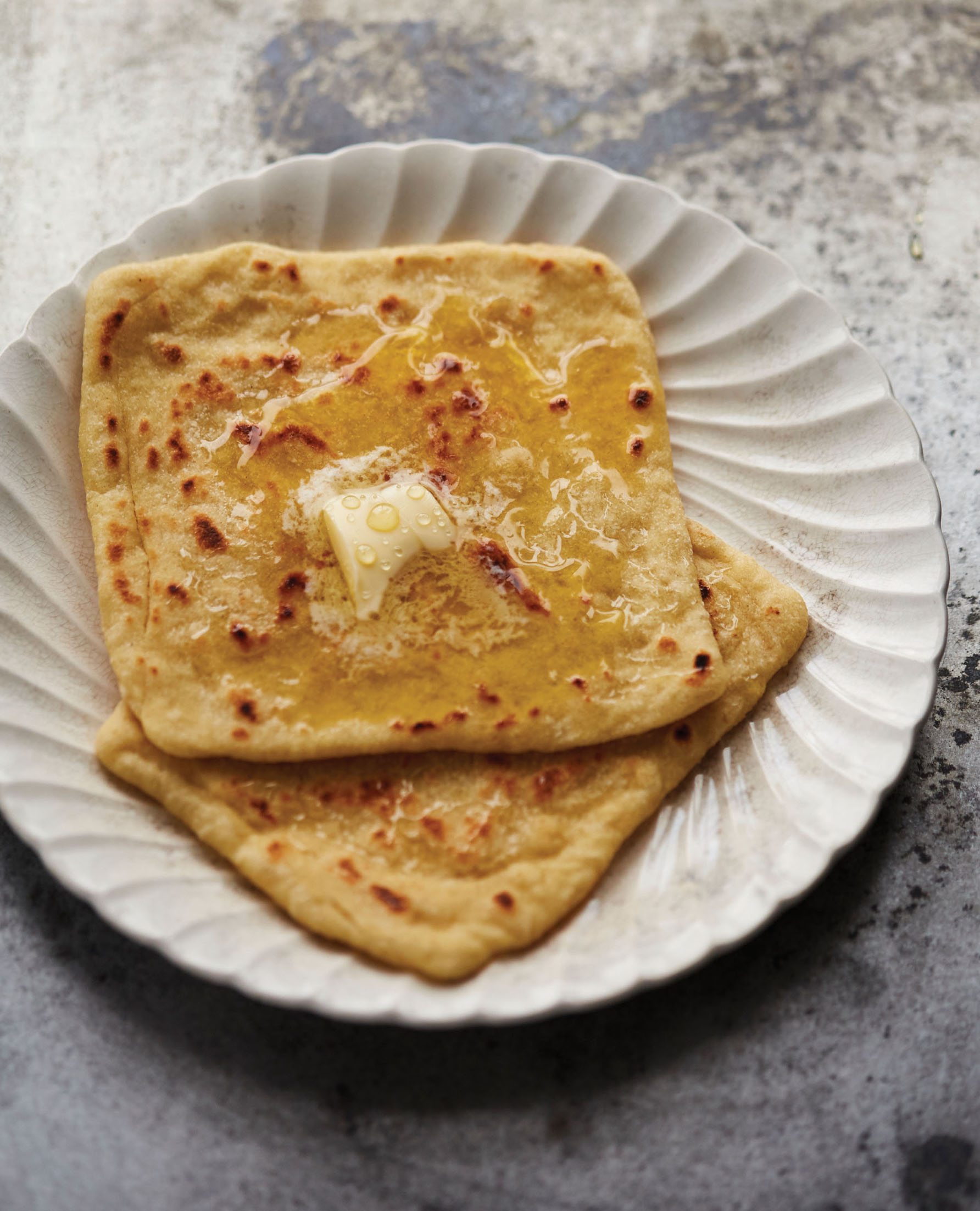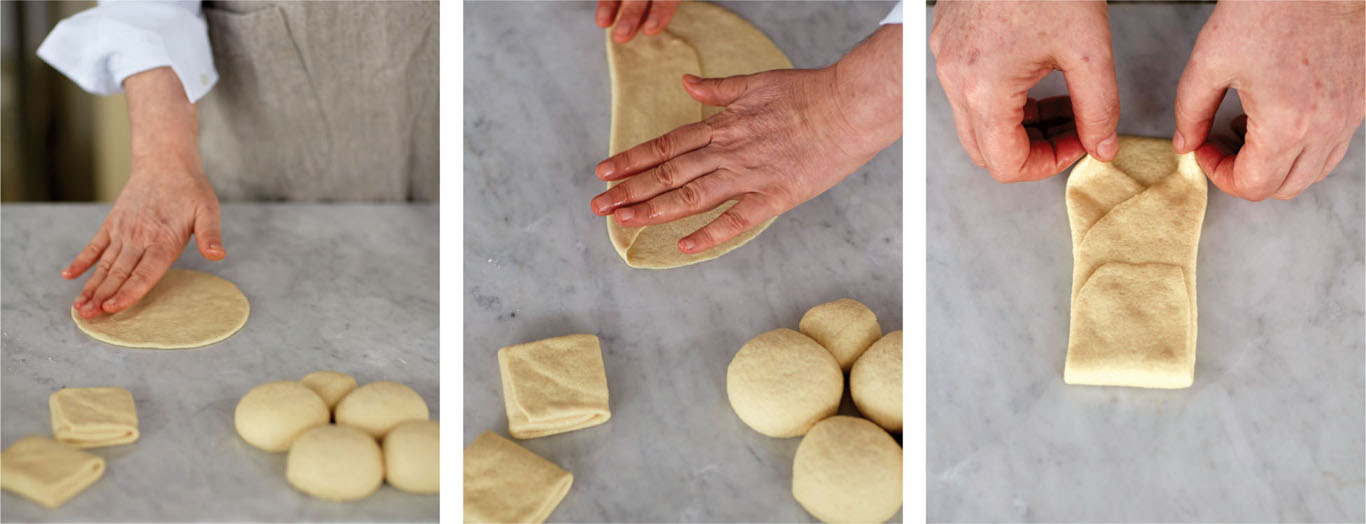North African Multilayered Breads
M’HAJJIB
MOROCCO | ALGERIA | TUNISIA

M’hajjib are typical North African street food that are made either plain or filled with a variety of stuffings. The name changes from country to country. In Algeria, they are called m’arekk or m’hajjib, in Morocco they are known as r’ghayef, and in Tunisia as m’lawi. The plain version of Tunisian m’lawi is used to make wraps, whereas r’ghayef, also known as m’semmen, are eaten as a snack or a quick meal on the go.
MAKES 8 INDIVIDUAL MULTILAYERED BREADS
1 cup (120 g) unbleached all-purpose flour, plus more for kneading
1 cup (165 g) semolina flour
½ teaspoon instant (fast-acting) yeast
1 teaspoon fine sea salt
Vegetable oil, for shaping the dough and greasing the pan
1. Mix the flours, yeast, and salt in a large bowl and make a well in the center. Add a generous ¾ cup (190 ml) warm water to the well and gradually mix with the flours until you have a rough, sticky dough.
2. Transfer the dough to a lightly floured work surface. Sprinkle the dough with a little flour and knead for 3 minutes. Shape into a ball and invert the bowl over the dough and let rest for 15 minutes. Knead for 3 more minutes, or until the dough is smooth and elastic. Cover with a damp kitchen towel and let rest for 30 minutes.
3. Divide the dough into 8 equal portions, each weighing about 2 ounces (60 g). Roll each piece into a ball. Smear your work surface and hands with oil. Place a ball of dough on the oiled surface and flatten it into a very thin round with your fingers, greasing your hands and work surface with more oil if necessary. Fold in one-third of the round, then fold the other third over to make a long rectangle. Fold one-third of the long end of the rectangle of dough, then fold over the other third to make a 5-inch (12.5 cm) square. Let rest while you make 3 more squares of dough.

4. Flatten the squares of dough with your fingers as thinly as you can without tearing them.
5. Grease a large nonstick skillet with a little oil and place over medium-high heat. Place 1 square in the hot pan (or 2 if they fit). Dip your fingers in a little oil and drizzle over the bread. Cook for 1½ to 2 minutes, or until the bottom is lightly golden. Turn over, drizzle with a little more oil, and cook for another 1½ to 2 minutes. Remove to parchment paper or a wire rack. Cook the remaining 3 breads in the same way. Then form and cook the remaining 4 breads in the same manner, making sure to oil your hands, work surface, and pan in between each bread. Serve warm.
REGAG
QATAR | UNITED ARAB EMIRATES | BAHRAIN
Regag is a very thin crisp bread from the Arabian Gulf that is made by rolling a ball of very loose dough over a hot plate to leave a thin film that is scraped off as soon as it becomes crisp and golden. Some of the older ladies who make it seem oblivious to the intense heat of the plate so close to their hand and are very adept at rolling the dough, but younger ones use a flat plastic panel (or sometimes a DVD case) to roll the dough over the hot plate. The bread can be spread with cheese and/or egg or with mehyawa (Iranian/Arabian Fish Sauce) as it bakes and then eaten as a snack, or it can be baked plain and used in Tharid, the Prophet’s favorite dish. Regag is delicious but rather difficult to make, not unlike warqa or brik, both of which use the same principle of leaving a thin film of dough on a hot plate. The difference is that regag is crisp and eaten on its own or broken up and used as a bed for a stew, while warqa is soft and pliable and used to make a variety of savory filled pastries.